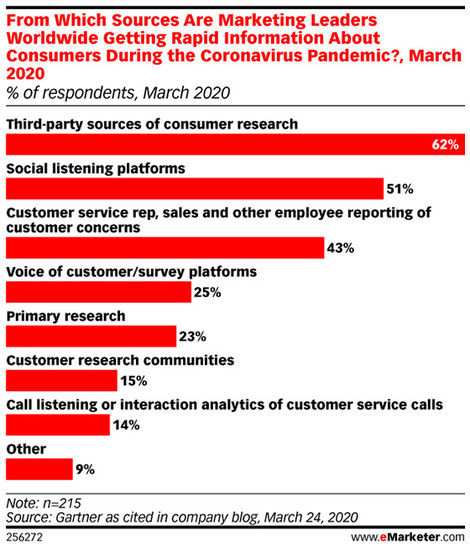Less talking, more listening!
We are at a point in time where the concept of social listening is becoming an invaluable tool for companies. In case you’re unfamiliar with the term, it’s defined as the monitoring of your brand’s social media channels for any customer feedback and direct mentions of your brand or discussions regarding specific keywords, topics, competitors, or industries, followed by an analysis to gain insights and act on those opportunities. The second part is important here, because the analysis and subsequent actions are what differentiate social listening from social monitoring. You listen and then you act based on what you hear. In other words, give the people what they want! Social monitoring merely collects data and keeps track of social media mentions and conversations.
So to recap, it’s a two step process:
Step 1: Monitor social media channels for mentions of your brand, competitors, products, keywords related to your business, relevant hashtags and industry trends.
Step 2: Analyze the information for ways to put what you learn into action. You’re looking beyond the numbers to consider the mood behind the data. The action you take can be something as small as responding to a happy customer, or something as big as shifting your entire brand positioning.
Marketers have long turned to social media to hear and respond to what people are saying and get a general feel for public sentiment. But the coronavirus pandemic has put fresh emphasis on social listening.
At the start of the pandemic, time spent with social media began to increase, as it was one of the only ways to engage with the outside world. And in the months that followed, we have faced some of the most major, polarizing issues our country has ever seen. This combination of events has resulted in massive numbers of people turning to social media to declare their feelings and opinions about all issues, big and small. Social media has always given people the chance to get up on their soapboxes, but it seems that users are now more vocal than ever before.
The many voices want to be heard and it would be foolish for advertisers and marketers to not take advantage of these insights. “At a time when nearly every aspect of life has been altered by business closures, stay-at-home orders, social distancing and job losses—and when consumers are demanding that companies do more than pay lip service to issues of race and equality—it’s more critical than ever for businesses to listen to their consumers,” said Debra Aho Williamson, eMarketer principal analyst at Insider Intelligence. Public sentiment truly needs to be taken into consideration when informing marketing strategies.
In fact, more than 50% of marketing leaders worldwide were using social listening platforms to quickly get information about consumers during the early days of the pandemic.

Aside from the fact that social listening offers speedy results, why else should a business use social listening?
- Engage with customers and learn what they want. Customers like when brands respond, either answering questions or simply acknowledging their preferences. This builds goodwill, loyalty and trust.
- Manage PR crises. If sentiment is down, look for the cause and make changes right away, by pulling a problem post, or apologizing for an insensitive Tweet.
- Track competitors. Knowing what people say about your competitors gives you important insights into where you fit in the marketplace and how you can plan accordingly.
- Find pain points and improve products. Research shows that more customers now prefer to complain to brands about poor products and services on social media than to make phone calls or send emails. Information about what’s not working for your customer is sometimes more important than what is working. You may need to tweak or resolve problems/frustrations people are talking about.
- Discover new sales leads. Reaching out, making a connection and sharing information helps establish your brand as the best resource when it comes time to make a purchase decision.
- Identify influencers and advocates. These are important people to connect with. They can have a huge influence on how their followers and fans feel about you.
- Find user-generated content. User-generated content can be an enormously effective – yet affordable – marketing strategy. Research shows that consumers trust recommendations of other consumers more than brand promotions.
- Increase customer acquisition. A social media presence allows you to reach a very large audience in a short amount of time. You may acquire followers who are not necessarily your customers at first.
- Discover trends. Monitoring what happens on social media helps keep your finger on the pulse of what is hot and trendworthy.
Clearly, there are many benefits to employing the use of social listening. There is a lot of data and insight to be gained from this practice, especially during this time of rapidly changing and evolving sentiment. It has proven to be a highly effective way of gauging your brand’s health and keeping track of your brand’s growth. If you’re no sure where to start, there are a multitude of platforms out there ready to help with the heavy lifting.



